Latex vs Mylar Balloons: What are the environmental considerations for disposal?
Are you wondering about the environmental impact of balloons? Many people worry about what happens to balloons after the fun is over. Let's explore the key differences between latex and Mylar balloons1 and their environmental footprints.
Latex balloons2 are made from natural rubber, which is biodegradable3 and breaks down quickly. Mylar balloons are made from plastic (nylon with metallic coating), which is not biodegradable and stays in the environment for a very long time. This difference is very important for the environment.
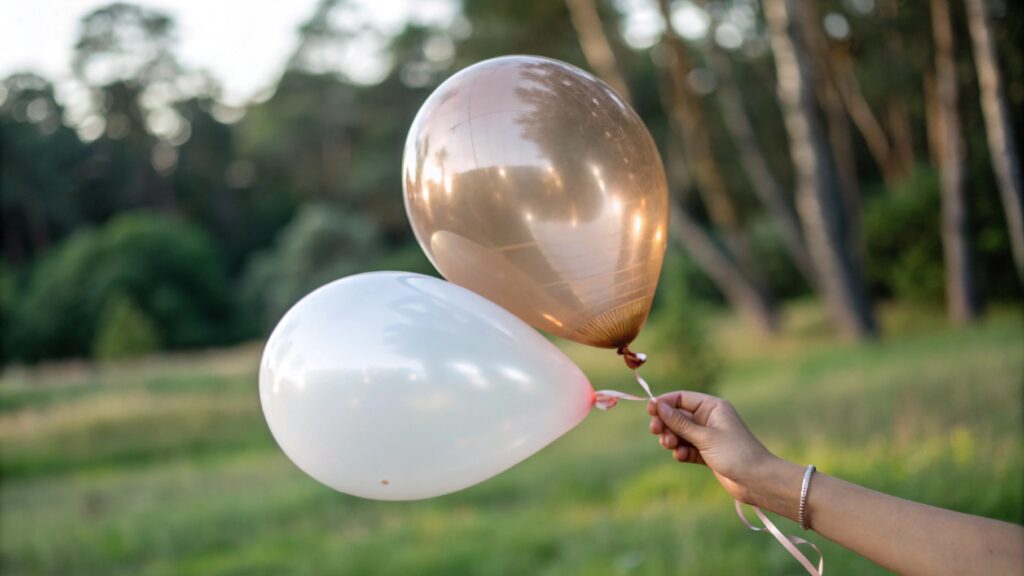
When we choose balloons for celebrations, we often don't think about where they end up. But knowing their environmental impact4 is very important for making good choices.
Latex vs. Mylar Balloons: Which Poses a Greater Threat to Wildlife Upon Release?
Do you ever worry about balloons hurting animals after they are released? Many people do. It is important to know which types of balloons are more dangerous.
Latex balloons are made from a natural material that breaks down over time. Mylar balloons are made from a plastic material that does not break down. This means Mylar balloons stay in the environment much longer.
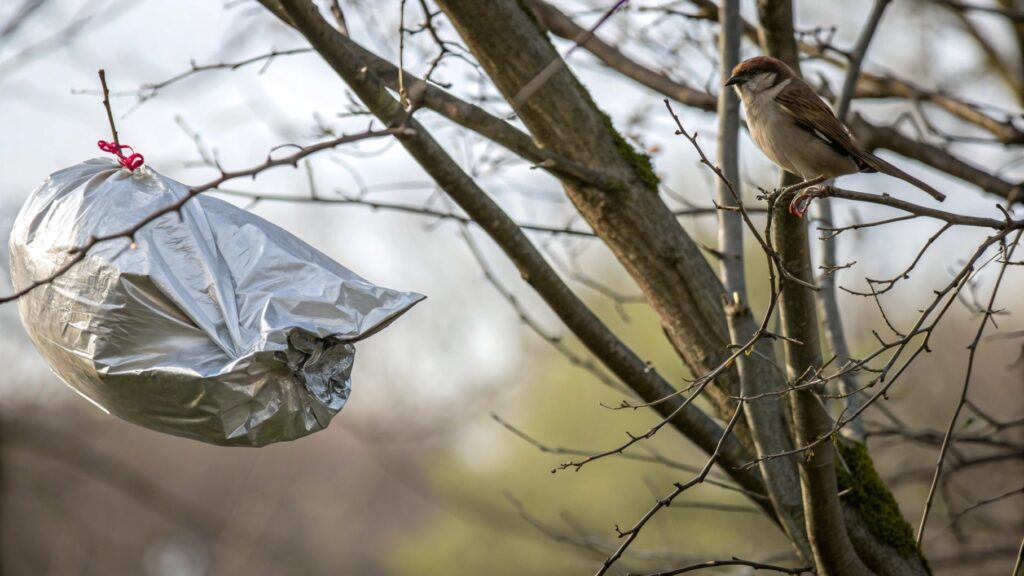
I have seen many discussions about balloons and wildlife. From my experience in the balloon industry, I know how important it is to talk about this topic clearly. When a balloon is released, it can travel very far. If it lands where animals live, it can cause problems.
Here is a comparison of the threats different balloons pose to wildlife:
| Feature | Latex Balloons | Mylar Balloons |
|---|---|---|
| Material | Natural rubber (tree sap) | Nylon plastic with metallic coating |
| Decomposition | Biodegradable, breaks down in weeks to months | Non-biodegradable, can last for hundreds of years |
| Wildlife Threat | Can be mistaken for food, but breaks down faster | Can be mistaken for food, causes blockages, entanglement |
| Visibility | Less visible when deflated | Highly visible, reflective, attracting attention |
| Impact on Animals | Risk of ingestion, but less long-term harm | High risk of ingestion, entanglement, long-term harm |
Latex balloons are often said to be a problem. However, because they are natural rubber, they start to biodegrade once they are exposed to sunlight and air. They become brittle and break into small pieces. Mylar balloons, on the other hand, are made of plastic. They do not break down. They can stay intact for a very long time, looking like a piece of bright trash. Animals can eat these pieces, thinking they are food. This can block their stomachs and cause them to starve. Also, the long ribbons attached to Mylar balloons can wrap around animals, preventing them from moving or flying. This is why Mylar balloons often pose a greater risk to wildlife if released.
Are Biodegradable Balloons a Myth? A Look into Latex vs. Mylar Decomposition Rates.
Are you unsure if balloons can truly break down in nature? Many people wonder about this. It is a common question, especially with growing concerns about waste.
Latex balloons are made from natural materials, so they can break down. Mylar balloons are made from plastic, so they do not break down. This is the main difference in how they affect the environment.
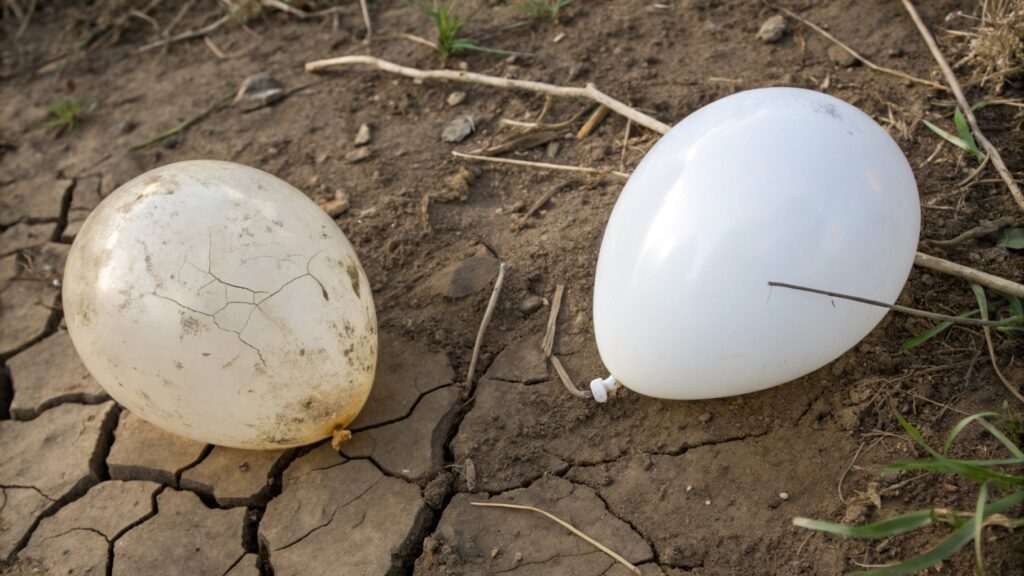
From my experience in manufacturing, I know the raw materials we use. Our latex balloons are made from 100% natural rubber. We do not add fillers or synthetic materials that stop decomposition. This is a very important point when we talk about biodegradability. When I started in this industry, I quickly learned about the different material properties.
Let's look at how these two types of balloons break down:
| Aspect | Latex Balloons | Mylar Balloons |
|---|---|---|
| Raw Material | Natural rubber latex (from rubber trees) | Nylon plastic film with metallic coating |
| Biodegradability | 100% biodegradable5 | Not biodegradable |
| Decomposition Process | Breaks down by microbes, UV light, oxygen, heat | Does not break down; photodegrades into smaller pieces |
| Time to Decompose | Weeks to months (similar to an oak leaf) | Hundreds of years, if ever |
| Environmental Residue | Natural organic matter | Microplastics and metallic fragments |
Latex balloons are truly biodegradable. They are made from the sap of rubber trees. This is a natural product. When exposed to light, air, and water, latex balloons will begin to break down. This process is called biodegradation6. Research shows that latex balloons break down at a rate similar to an oak leaf. It takes weeks to a few months, depending on the environment. For example, if a latex balloon lands in a forest, it will decompose and return to nature. Mylar balloons, also known as foil balloons, are different. They are made from a type of plastic called BoPET (biaxially-oriented polyethylene terephthalate) with a metallic coating. Plastic does not biodegrade. Instead, it breaks into smaller and smaller pieces called microplastics7. These microplastics stay in the environment for hundreds of years. They can enter the food chain and harm animals, including us. So, while latex balloons are biodegradable, Mylar balloons are not. It is important to know this difference when choosing balloons.
What are the Ocean Impacts of Latex and Mylar Balloons?
Have you ever thought about where balloons go if they land in the ocean? It is a serious concern. Our oceans face many threats from pollution.
Latex balloons break down much faster in the ocean. Mylar balloons stay in the ocean for a very long time. This is a big problem for marine life.
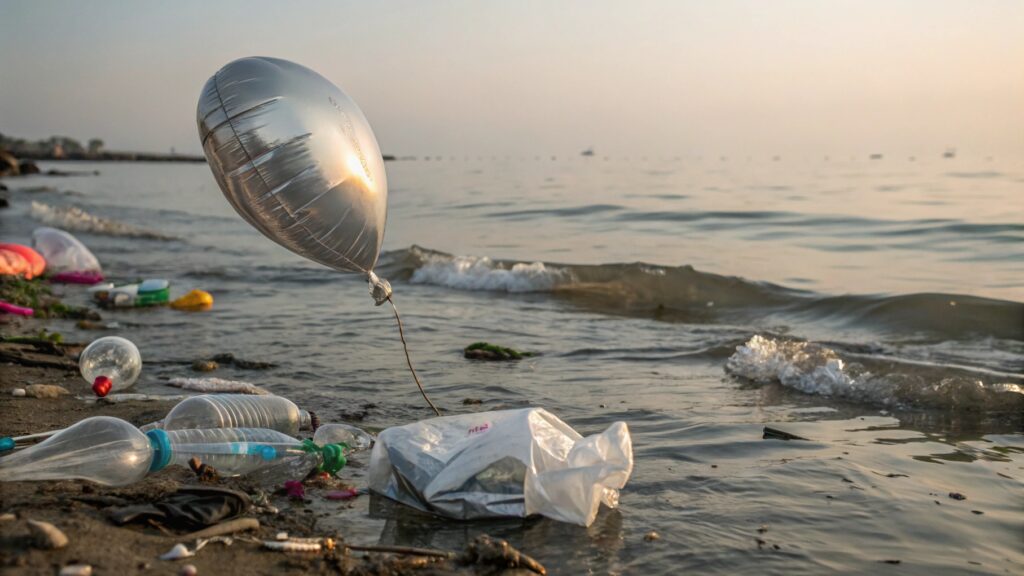
Working in the balloon industry, I understand the need for sustainable practices8. I see the pictures of ocean pollution and it makes me think about our part. We take great care to ensure our products meet international standards. This includes thinking about their end-of-life impact. It makes me confident when I say that the choice of material makes a huge difference.
Here is how latex and Mylar balloons affect our oceans:
| Impact Area | Latex Balloons | Mylar Balloons |
|---|---|---|
| Decomposition | Degrades relatively quickly in salt water | Persists indefinitely, does not biodegrade |
| Entanglement Risk | Can entangle, but material degrades | High risk of entanglement, material remains intact |
| Ingestion Risk | Can be ingested, but breaks down faster | High risk of ingestion, causes blockages, long-term harm |
| Chemical Leaching | Minimal, natural compounds | Potential for plasticizers and metallic leaching |
| Microplastic Formation | None (biodegrades into natural elements) | Breaks into harmful microplastics and metallic fragments |
| Ocean Cleanup | Less persistent, less material to remove | A major component of marine plastic pollution |
When balloons land in the ocean, they become marine debris. Latex balloons, being natural rubber, will start to break down in the saltwater and sunlight. Marine bacteria can also help in their decomposition. While they can still harm marine life if ingested or cause entanglement, their impact is less long-lasting because they decompose relatively quickly. In contrast, Mylar balloons do not break down in water. They can float for a long time, looking like jellyfish or other food sources. Sea turtles and other marine animals often mistake them for food. When ingested, Mylar balloons can block an animal's digestive system, leading to starvation. The shiny, reflective material can also attract curious animals, leading to entanglement. The long ribbons often attached to Mylar balloons are also a major source of entanglement. Because Mylar balloons are plastic, they will eventually break into smaller plastic pieces, or microplastics. These microplastics are very dangerous. They are eaten by small marine creatures, then move up the food chain, affecting all marine life, including fish that humans eat. This is why Mylar balloons are a much greater threat to ocean health than latex balloons.
How Can We Responsibly Dispose of Balloons to Minimize Environmental Harm?
Are you wondering how to enjoy balloons without hurting the environment? It is a common question for many who care about our planet. There are simple steps we can all take.
The best way to minimize environmental harm from balloons is to never release them into the air. We should always dispose of them properly after use. This means putting them in the trash.
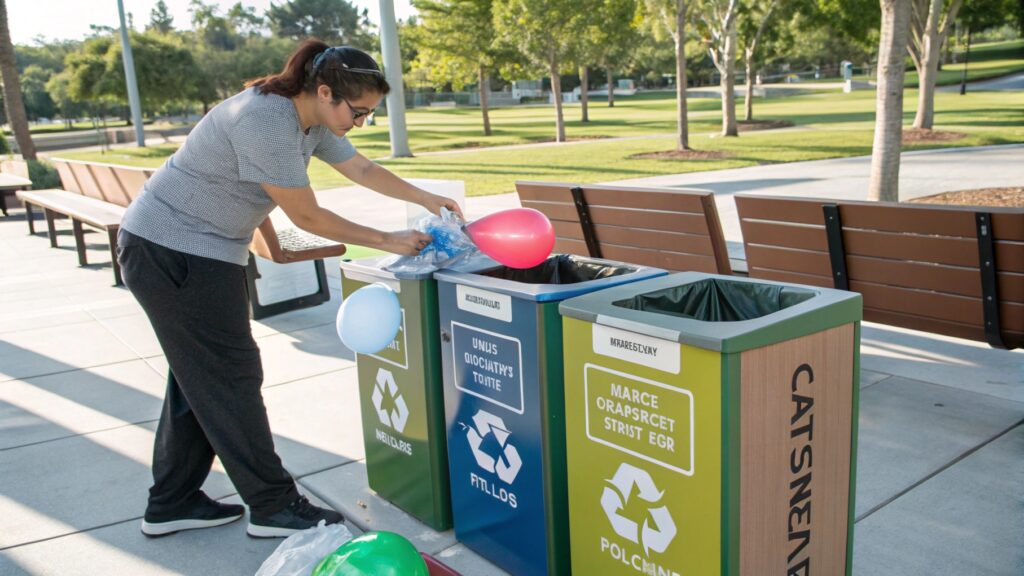
At AIHUA BALLOON, we always tell our customers about responsible balloon use. I always mention that our mission includes providing high-quality, safe products. But safety also extends to the environment after the party is over. We believe in "Make moments colorful," but not at the expense of our planet. This is why I always tell people to think about disposal from the start.
Here are some ways we can responsibly dispose of balloons:
| Balloon Type | Recommended Disposal Method | Additional Tips |
|---|---|---|
| Latex Balloons | Deflate and place in general waste. | Cut into smaller pieces to speed up decomposition. Consider composting if your local facility accepts natural rubber. |
| Mylar Balloons | Deflate completely and place in general waste. | Never release. Cut off ribbons and dispose of separately. Some specialized recycling centers might accept them. |
| All Balloons | DO NOT RELEASE INTO THE AIR. | Reuse balloons for other decorations. Anchor balloons securely if used outdoors. Educate others about responsible balloon use. |
The most important rule for all balloons is simple: never let them go. A balloon release is a form of littering. When latex balloons are deflated, they can be thrown into the general trash. Even though they are biodegradable, throwing them in the trash ensures they go to a landfill where they can decompose or be managed. Some local composting facilities might accept natural rubber, but you should check with your specific facility. Mylar balloons are made of plastic. They should also be deflated and put into the general trash. Mylar balloons are not typically recyclable in most curbside recycling programs because they are a mix of plastic and metal. This combination makes them hard to process. It is best to cut off any ribbons or strings attached to Mylar balloons, as these can be especially dangerous for wildlife. If you still want to be even more responsible, you can explore ways to reuse balloons for future decorations or craft projects. Businesses that use a lot of balloons might look into specialized recycling programs for Mylar if they are available in their area. By taking these simple steps, we can enjoy our celebrations and protect our planet at the same time.
Conclusion
Latex balloons are made from natural rubber and are truly biodegradable. Mylar balloons are plastic and do not break down, causing long-term environmental harm. Always dispose of balloons responsibly in the trash, and never release them into the air.
-
Exploring the environmental effects of Mylar balloons can guide you in selecting more eco-friendly options for your gatherings. ↩
-
Understanding the environmental impacts of Latex balloons can help you make informed choices for celebrations and events. ↩
-
Learning about the importance of biodegradability can enhance your awareness of sustainable practices and their benefits. ↩
-
Learning about the environmental impact of balloons can guide you in making eco-friendly decisions for your events. ↩
-
Understanding the meaning of 100% biodegradable can help you make informed choices about eco-friendly products. ↩
-
Exploring biodegradation processes can deepen your knowledge of how materials impact the environment and their sustainability. ↩
-
Learning about microplastics and their effects on marine ecosystems is crucial for understanding pollution and its consequences. ↩
-
Explore this resource to learn how the balloon industry can adopt sustainable practices to protect our oceans and environment. ↩
